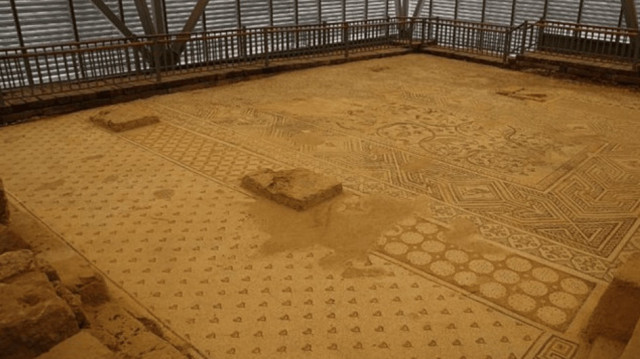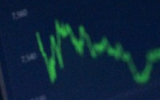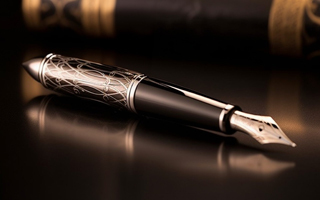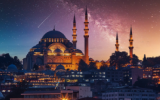
125-square-meter mosaic from Kingdom of Commagene once again on public display following 2 months of restoration work led by Adiyaman Museum Directorate
A 125-square-meter mosaic in Perre, one of the five main cities of the ancient Kingdom of Commagene in southeastern Türkiye, has reopened to visitors following two months of restoration work led by the Adiyaman Museum Directorate.
Discovered during archaeological excavations in 2009 and identified as part of a basilica structure, the mosaic is notable for both its size and artistic complexity. It remains preserved as a single piece and features detailed three-dimensional cube motifs, octagonal and heart-shaped patterns, and natural depictions of grapevines, grape clusters, deer, roosters, hens, and demoiselle cranes.
Originally restored in 2021 by teams from the Gaziantep Regional Directorate of Restoration and Conservation Laboratory under the Culture and Tourism Ministry, the mosaic had suffered surface contamination and environmental wear, prompting the latest conservation effort.
- Cultural significance restored
Museum teams spent two months meticulously cleaning the mosaic, reviving its colors and reinforcing damaged sections. The renewed conservation process focused on removing surface deterioration and stabilizing fractured areas.
Speaking to Anadolu, Adiyaman Museum Director Mehmet Alkan said the work brought the piece back to its original appearance. “The surface deterioration was addressed, and fractured areas were reinforced,” he said.
“Our work brought back the mosaic’s original colors and patterns. The heart motifs, 3D cube designs, and the depiction of a paradise garden in the central scene have regained their vivid and authentic appearance.”
He said the mosaic ranks among the largest single-piece examples in Southeastern Anatolia and is now more accessible and visually impactful for visitors.
Visitor Murat Isik, who toured the site after the restoration, said he is deeply impressed by the craftsmanship. He encouraged others to see the mosaic for themselves, calling the experience moving.







